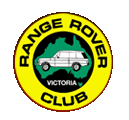Range Rover Club Victoria
All vehicle makes welcome – it’s not about the cars - it’s about the people
Range Rover Club of Victoria |
The Range Rover Club of Victoria is one of Victoria’s longest-established 4WD Clubs having been founded in 1977, originally of Range Rover owners only. Over the years the Melbourne based 4WD club has grown to embrace owners of all makes of 4WD vehicles and people from all walks of life brought together by a love of the great outdoors and a sense of off-road adventure!
The RRCV of today it is a family oriented four wheel drive touring club that supports a diverse range of interests and vehicles of all types. Whether you like harder High Country trips, fixed based camping or long outback touring trips our Trip Calendar has something for you. We aim to provide our Members with a wide range of activities and actively promote social, recreational and safe four wheel driving.
Our trips cater for drivers and families of all experiences levels. Indeed not all our trips involve four wheel driving. We also aim to get together regularly for social events such as winery tours and restaurant nights. We also provide driver training; via our FWDV accredited instructors.
Club meetings are held at 7.30pm on the first Tuesday of most months and are currently a blend of face-to-face and online, via Zoom - where 30-40 members catch up each month. Our monthly club meetings are held at The Glasshouse (31 Station St Caulfield East, 3145) at Caulfield Racecourse. Many members turn up early to eat at the bistro beforehand.
If you are interested in 4WDing in and around Melbourne, Victoria or behind, contact our Membership Secretary if you want to join the meeting memberships@rangeroverclub.org.au
Check out the calendar for more details and our new venue, and then come along and see what we’re about! (let us know you're coming so we can look out for you).
By the way, if you thought that we're just Range Rovers, check this out! It's not about the cars, it's about the people.
===========
To Login
- If you have a password already - simply hit the Login button at the top of the page and use your email and password to get access.
- If you are visiting the website for the first time:
-
- you need to get yourself a password. Click on Reset Password (it's the same link if you forget the password).
- or use Facebook or Google(Gmail) to log in for you - needs to be the same email used for club access.
Our monthly club meetings are at The Glasshouse at Caulfield Racecourse - Generally the 1st Tuesday of the month.
Meetings are hybrid format of face-to-face and on Zoom.
Click here or contact our Membership Secretary if you want to join us
memberships@rangeroverclub.org.au
|
